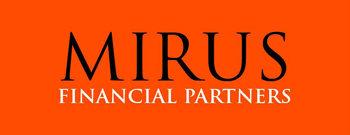Changes in Catch-Up Contribution Regulations
Submitted by MIRUS Financial Partners on October 1st, 2025
The Department of the Treasury and the Internal Revenue Service (IRS) have issued final regulations on catch-up contributions under the SECURE 2.0 Act of 2022. These rules apply to a wide range of retirement savings plans, including 401(k), 403(b), governmental 457(b), SARSEP, SIMPLE IRA, and SIMPLE 401(k) plans.
What Are Catch-Up Contributions?
Catch-up contributions are additional amounts that individuals age 50 or older may contribute to their retirement accounts, above the standard annual contribution limit. The intent is to give individuals approaching retirement age an opportunity to add more to their savings. SECURE 2.0 expanded this opportunity by allowing higher contribution limits for those reaching ages 60 through 63 during a given year.
Key Changes Introduced by SECURE 2.0
One significant update under SECURE 2.0 is that employees with prior-year FICA wages above $145,000 (adjusted annually for inflation) must make their catch-up contributions on a Roth basis, using after-tax dollars. This means that while contributions are made after taxes are paid, qualified withdrawals in retirement will generally not be subject to additional income tax.
The law also permits higher catch-up limits for those in the 60–63 age range, although not all plans are required to offer these higher limits.
Clarifications in the Final Regulations
The final regulations, issued September 16, 2025, provide further detail:
- Wage Calculation: Wages are determined using the amount reported in Box 3 of Form W-2 (Social Security wages). Employers that relied on Box 5 (Medicare wages) are considered to have acted in good faith through January 1, 2027.
- Self-Employment Income: Income subject to self-employment tax (SECA) is not included in determining eligibility.
- Employer Groups: Employers are not required to aggregate wages across different companies, though aggregation may be allowed in certain cases involving common ownership or shared payroll systems.
- Plan Elections: Plans may allow participants to decide each payroll period if a portion of their deferrals should be treated as catch-up contributions. Plans are not required to reclassify those contributions if it is later determined they were not eligible.
- Deemed Roth Elections: Some plans may structure Roth catch-up contributions so that the Roth requirement only applies when regular contribution limits have been reached.
- Error Corrections: Small errors, such as amounts under $250 or corrections caused by an amended Form W-2 issued after correction deadlines, may not require plan adjustments.
Timing and Implementation
The requirement for Roth catch-up contributions begins January 1, 2026. During 2026, employers and plan sponsors are expected to follow a reasonable, good-faith interpretation of the rules. The final regulations themselves take effect January 1, 2027, with some exceptions for collectively bargained and governmental plans.
What This Means for Participants and Employers
For individuals, these rules determine how and when additional contributions can be made, and how those contributions are taxed. For employers and plan sponsors, the regulations will require updates to plan documents, payroll procedures, and employee communications.
At Mirus Financial Partners, we can help you understand how these changes may affect your retirement planning options and assist you in working with the appropriate professionals to ensure compliance.
* * * *
This summary is for informational and educational purposes only. It should not be considered legal, tax, or investment advice. Rules may vary depending on your specific retirement plan and personal financial situation. For guidance tailored to your circumstances, you should consult your financial professional, tax advisor, or legal counsel.

